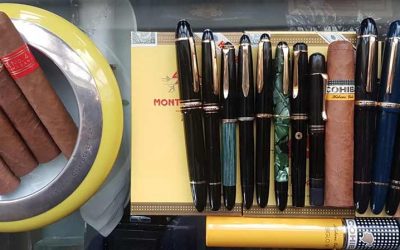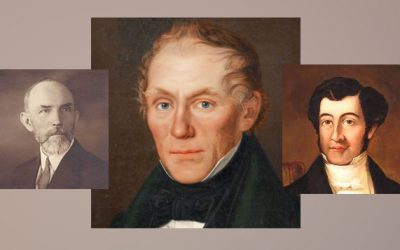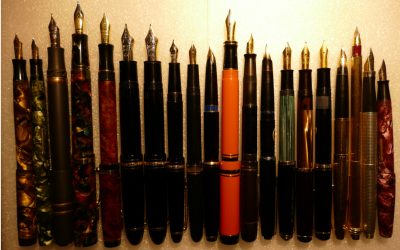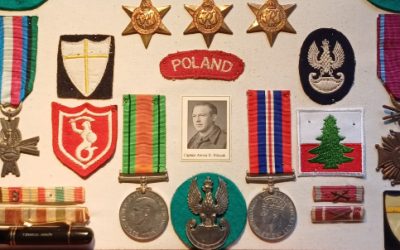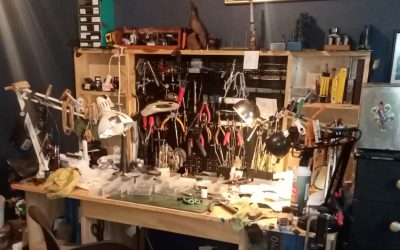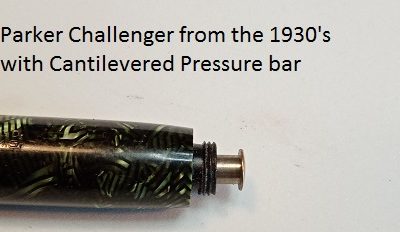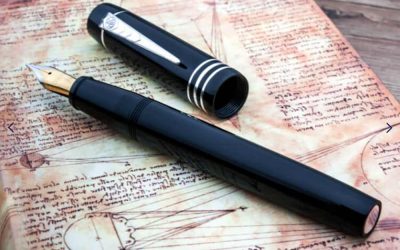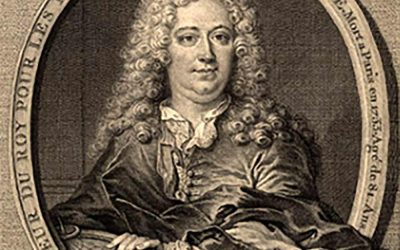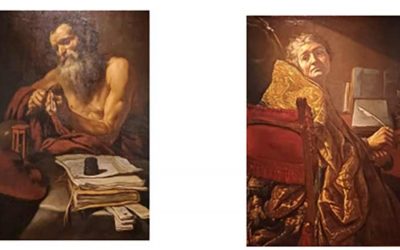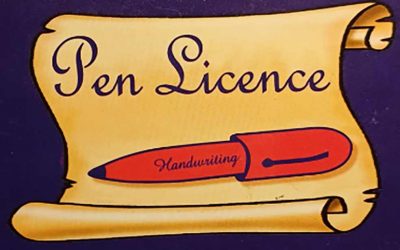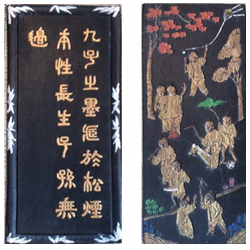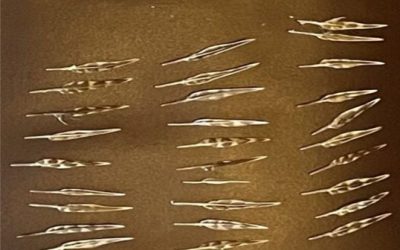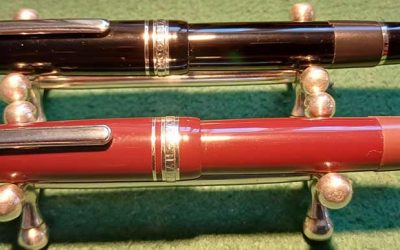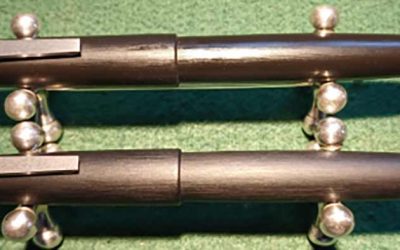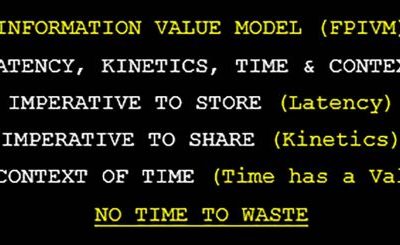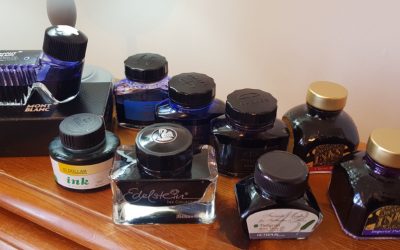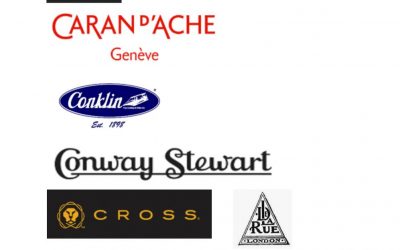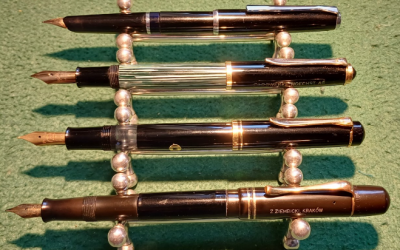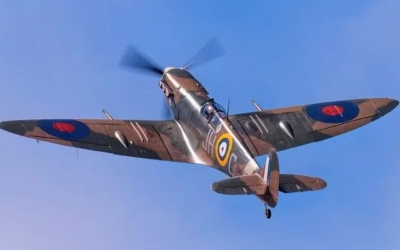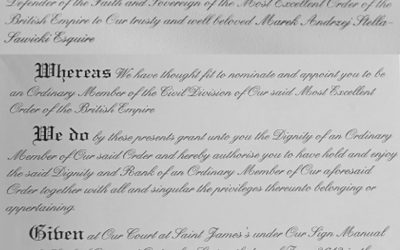The Star Rating values in this edition should be used only as a guide.
Month: November 2023
MDXLIII-MMXXIII (1543-2023)
Inspired by and published for the 480th Anniversary of Nicolaus Copernicus (1473-1543) the most important thesis De revolutionibus orbium coelestium (On the Revolutions of the Celestial Spheres)
The Writing Instruments “Few”
August Eberstein / Kaspar von Faber (1730-1784) / Joseph Bramah (1748-1814), read more…
Going for Gold (from Left to Right)
Mentmore Auto-Flow Marble 14 K (Au585) Gold Nib
Mabie Todd & Co Ltd Black Bird 14 K (Au585) Gold Nib
Visconti Hom Sapiens Lava Bronze Age Maxi 18 K (Au750) Gold Nib
read more…
World War II Medals and Pelikan Pen
If the Pelikan 100 fountain pen could talk….the military history of WWII since the 1st September 1939-5th May 1945 including: The Africa Star, The Italy Star, The 1939-1945 Star, The George VI War Medals 1939-1945: The War Medal and The Defence Medal, The Polish “Karpacka Brigade”.
Adhesives, solvents, sealers and cleaning agents used in pen repair. Eric Wilson
Part One
The purists in our line of interest will perhaps be aghast at some of the following, what works for me may not work for everyone, but a good few years of experience, have led to this article, which does have an element of the Penn and Tellers, (US magicians who reveal trade magicians’ secrets).
Adhesives, solvents, sealers and fillers used in pen repair and servicing. Eric Wilson
Part Two
Many of the solvents /adhesives will seem to and do have similar properties, the reason being that vintage pen materials vary wildly in quality and how they react. This is evident in particularly, Black Hard Rubber from different manufacturers in vintage and modern supply, also, the variance in Cellulose Nitrate from the 1930’s and 40’s. Lucite introduced to pens in the early 1940’s, proved to be a more stable material, requiring Methyl Ethyl Ketone rather than Acetone as a solvent for repairs.
Cap lip repair to Black Hard rubber chipped caps. Eric Wilson
Step by step detail on the method I use for the repair of these, which requires quite delicate lathe work
Probably one of the most frequent faults particularly with hard rubber pen caps, of the early part of last century are cracked and chipped cap lips. Early ONOTO pens caps from early the last century are particularly susceptible to this defect. With these it’s not too much of a problem, as generally the caps are smooth, so manufacture of a new cap itself, does not prove too many problems.
Button Filler Pressure Bar installation. Eric Wilson
A simple tool to make and use for easy installation from a scrap pressure bar.
The correct method of installing a pressure bar is on servicing to remove the Button and from the barrel end then pull out the pressure bar, then remove the section and old sac etc, to service the pen.
Japanese eyedropper pen service. Eric Wilson
These pens have a seal to the barrel end and a piston rod in the barrel that is coned to fit the coned depression in the feed, shutting off and regulating ink supply to the feed. The seals in the barrel end are held in place usually by a hard rubber threaded closer washer.
Not all pens are the same and have a variety of fittings to the seals. Generally, the pens seals, where it is thought, able to last the lifetime of the pens and not requiring servicing.
Competition
Win an Onoto MAGNA CLASSIC BLACK & SILVER FITTINGS Handcrafted bestselling Fountain Pen Based on the style and shape of one of the most famous fountain pens ever made – the Onoto Magna of 1937 acclaimed by many as one of the best fountain pens...
Bibliography
Clark Juan Manuel, Collectible Fountain Pens, 2002Crum Ewing Alexander, The Fountain Pen: A Collector’s Companion, 1997-1998Erano Paul, Fountain Pens, 1999Fairbank Alfred, The Story of Handwriting, 1970Finlay Michael, Western Writing Implements in...
Appendix 11. The Writing Instruments “Few”
Nichols Bion (c1656-1733) had the title of Ingénieur du Roi to Louis XIV, and his name was frequently referenced during his time and in many years which followed. He was professionally active from 1681 to 1733. In addition to making scientific...
Appendix 10. A sketch of the history of the pen
A sketch of the history of the pen, courtesy of John Sorowka. This is a selected part of much larger and very comprehensive article by the same distinguished author. During the 18th century in Europe, particularly in England, it was found that new...
Appendix 9. The official Pen Licence
The above very important School Pen Licence was awarded in January 2023, but apparently it may be withdrawn at any time if handwriting deteriorates. The fountain pen of choice, as used here above is a classic S.T. Du Pont Paris.
Appendix 8. Two vintage images of the highly decorative old Chinese ink bloc, courtesy of Eric Scherer
The size of the above Chinese ink bloc is 125x55x15 mm deep. It was bought some time ago and Eric had no idea about its provenance or origin. Eric had the text on the reverse recently translated. It is written in old Chinese script and calligraphy...
Appendix 7. Woodcock Pin – Feathers
(SCOLOPAX RUSTICOLA), yes this is a key component part (nib) of historic and traditional British writing instrument The tiny Woodcock pin-feathers are found on the leading edge of a bird's wings. Only two such feathers occur on any mature bird -...
Appendix 6. Abbreviations & Pen Terminology
B = Broad BB = Double Broad BC = Blind capBHR = Black hard rubber BPR = Black precious resinCF = Capillary fillerCPT = Crome plated trimCS = Clip screwED = Eyedropper EF = Extra Fine F = Fine FPIVM = Fountain pen Information Value model FU = Filler...
Appendix 5. Simple fixing of non-posting of Majohn P136 fountain pen
You can easily persuade your non-posting Majohn P136, to post securely simply by sticking some popular PVC tape on its cylinder, as illustrated above.
Appendix 4. Spitting image to the naked eye
Jinhao 80 Fountain Pen (PRC) vs LAMY 2000 Fountain Pen (Germany) Jinhao X159 Fountain Pen (PRC) vs Montblanc No. 149 Meisterstück Fountain Pen (Germany) Majohn P136 fountain pen (PRC) nib vs Montblanc No. 146 Meisterstück (Germany), also two...
Appendix 3. Seven Fountain Pen Information Value Models (FPIVM)
All things…almost considered including…ink Writing Instruments and some of their marketing programmes: Modern day vs historic customer product & market positioning Price Positioning (Low-Medium & Medium-High/Very High) as a differentiating...
Appendix 2. Little reminiscence and now about ink
Specially selected washable inks or atrament There is apparently circa 700 different colours of the ink in the world, or flow, flow & overflow Montblanc Tinte-Ink-Encre-Tinte Blue, 50 ml Parker Quink Blue, 57 ml Parker Quink Permanent Blue, 57...
Appendix 1. Brands
Example of small writing instruments humble collection as on 6th May 2023, Coronation Day of HM King Charles III
There is circa 100 of us in the above picture, celebrating the Coronation Day of HM King Charles III on 6th May 2023. The above number “100” is in fact the maximum number of writing instruments permitted in our collection, which we shall not at...
Fountain Pen – Reflections of a User
My fascination with fountain pens traces back to my childhood. My father, a former local government employee, back in the 1950s, possessed a beautiful (then and now, in my memory) "Parker" fountain pen. It was probably a fairly common model, but in...
The primary & secondary research questions
The primary research question to be tackled at some point is derived from the title: A-Z of Fountain Pen Universe – Post Modern Constructive Commedia dell’Arte, which started long time ago. Is the imperative of Fountain Pen introduction to the next...
A History of this edition and the imperative of Fountain Pen introduction to the next generation, our own 1933 Pelikan Model 100 heirloom is fully functional and still in service
The original Pelikan Fountain Pen, Model 100 was supplied by Z. Ziembicki (1880-1954) Company of Kraków, Poland. Owned by my Father-in-Law, as a student of the Faculty of Law at the Jagiellonian University in Kraków, Poland over 90 years ago. The...
Highlights and a brief history of fountain pen
Highlights and a brief history of fountain pen for people in a hurry Quills have been used for at least 14 centuries and were the most common form of writing instrument in the Western World until the end of the 19thCentury - the reed pen and brush...
Her Majesty The Queen Elizabeth II and Prince Philip graciously signed on 16th June 2012 this MBE Order nomination
Black ink is still the best for proper signatures on most important documents. Despite blue, brown, and green ink's popularity, most documents such as the one above, requires us to use black ink. Her Majesty and Prince Philip signed on 16th June...
Forward
Today fountain pens are no longer the everyday tools they once were, before the work of Laszlo Biro became widespread, for most people the choice was between a pencil, a dip pen, or a fountain pen. Today these former tools are collected, restored...

